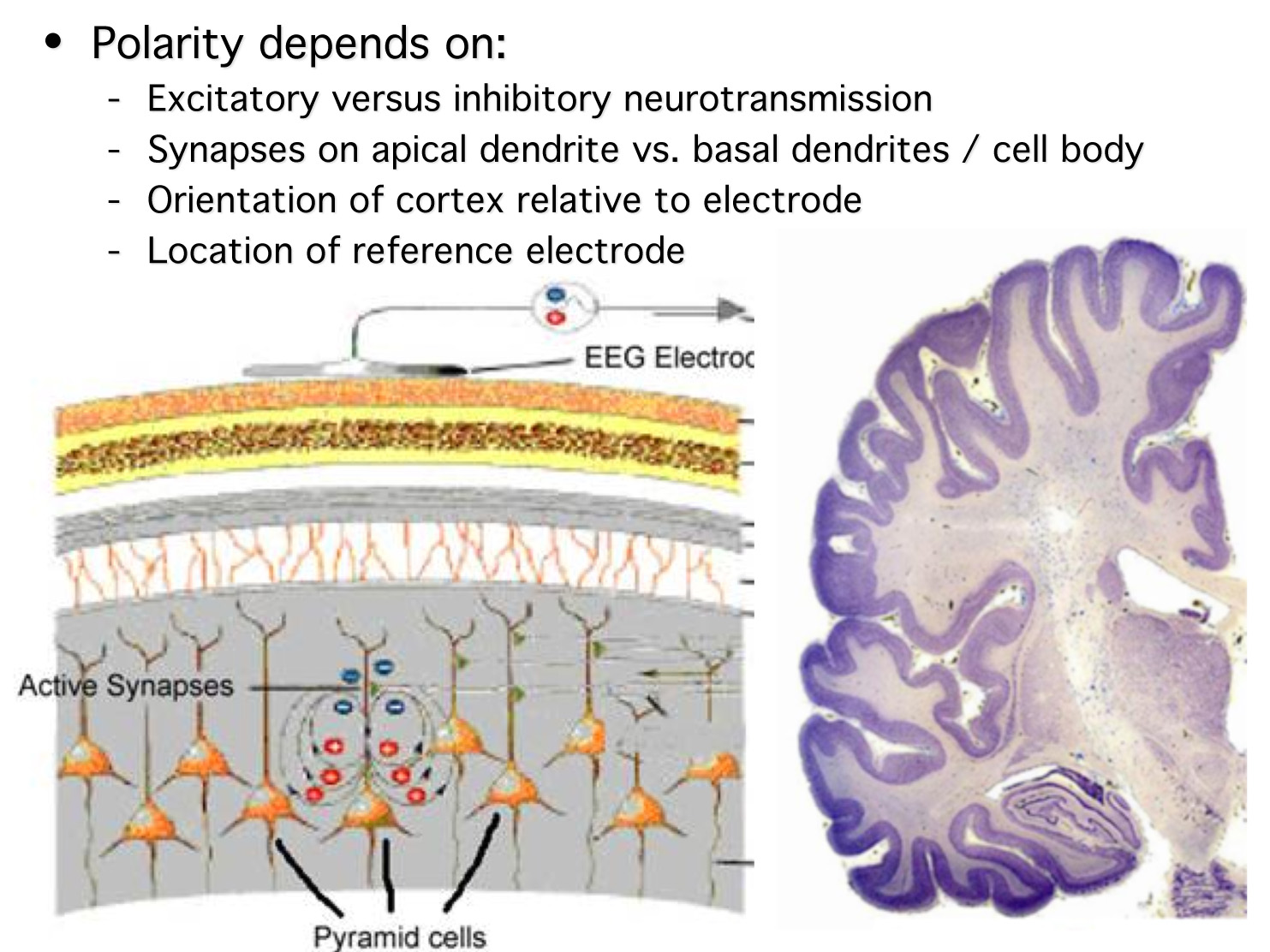ERP Boot Camp Tip: What does the polarity of an ERP component mean?
/We are often asked whether it means something whether a component is positive (e.g., P2 and P3) or negative (e.g., N1, N400, error-related negativity). The answer, for the most part, is "no".
First, every ERP component will be positive on one side of the head and negative on the other side. We often don't "see" the other side of a component (e.g., the negative side of the P3) because (a) the opposite-polarity side is in a place without any electrodes (e.g., the bottom of the skull), (b) the opposite-polarity side is obscured by other components, or (c) the opposite-polarity side is spatially diffuse (low amplitude and broadly distributed). But it's there!
As the figure below shows, there are 4 factors that determine the polarity of an ERP component. If we knew 3, we could in principle determine the 4th by knowing the polarity. In practice, we never know 3 so we cannot determine the 4th. In particular, although the polarity depends on whether the ERP arises from excitatory or inhibitory neurotransmission, we cannot ordinarily determine whether a component represents excitation or inhibition from its polarity.
Mainly, polarity is used to help identify a given component. For example, if our active electrodes are near Pz and our reference electrodes are near the mastoids, we can be sure that the P3 will be a positive voltage. Beyond that, polarity doesn't tell us much.

